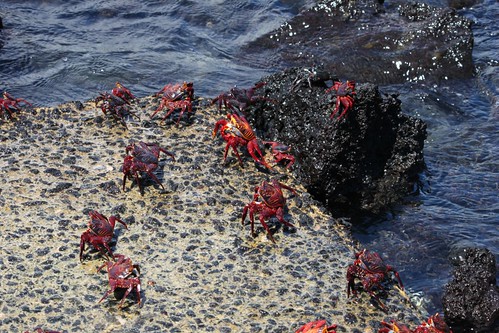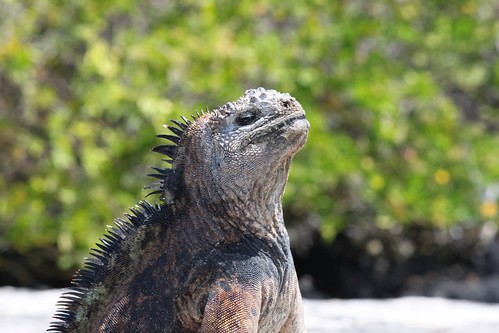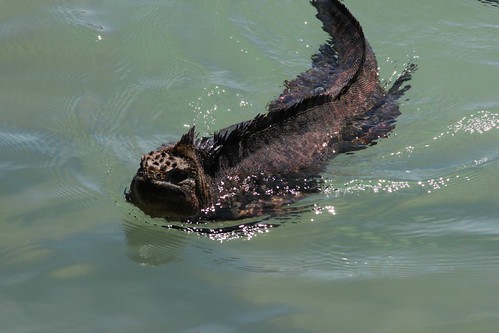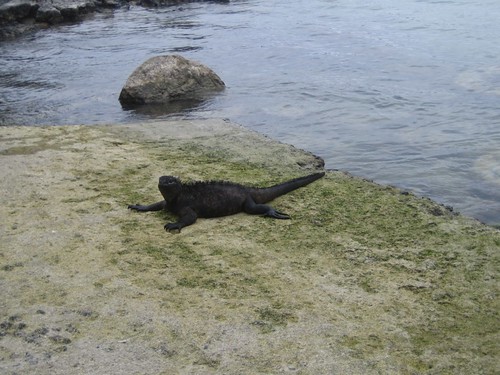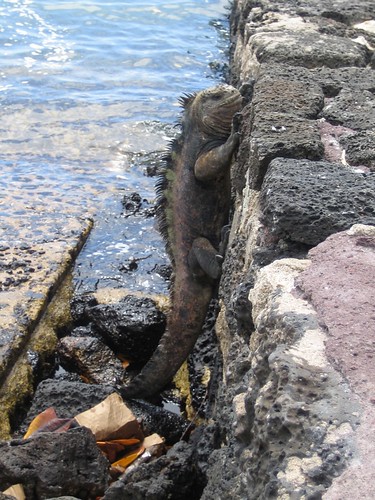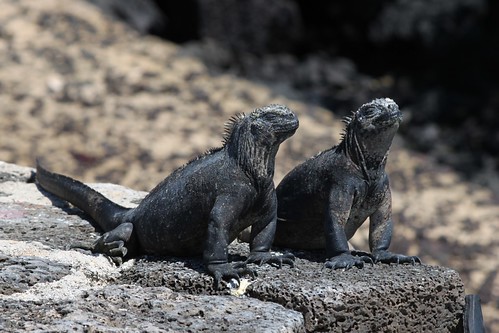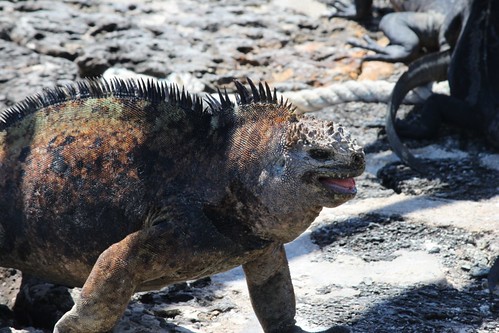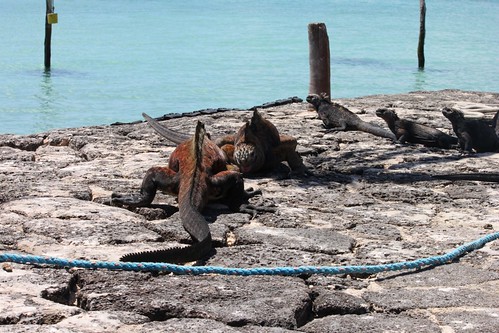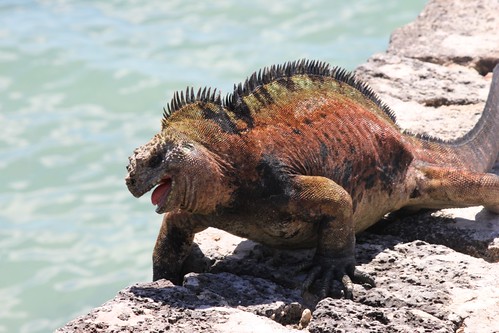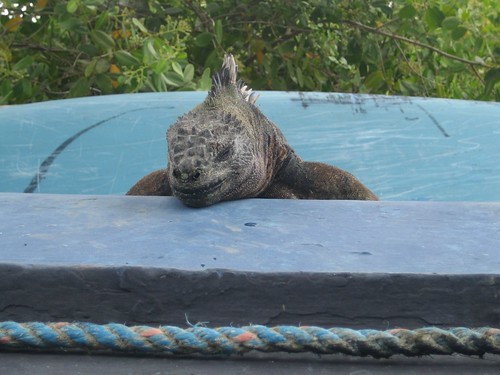Unlike most people who go home at midday, I eat my lunch at the station (Roger makes a delicious tuna sandwich with capers). While the shady gazebo and the director’s beach are nice, my favourite spot is on the ramp at Biomar (the marine sciences building). On any given day, I see at least half a dozen species (crabs, pelicans, frigate birds, herons, lava gulls and yellow warblers) but the real entertainment is watching the marine iguanas and the change in their behaviour over the past several months.
There are seven subspecies of marine iguana (Amblyrhynchus cristatus), and they vary in colour and size depending on the island. The most colourful are on Isla Española but the ones on Santa Cruz are quite attractive, especially the large males that take on a green tinge during the mating season.
The first time I went down to Biomar, the iguanas were stretched out across the path like cows on a country road. I had to carefully step over them. Now they congregate on the small pier and the rocks close to the water perhaps because the weather is warmer.
Marine iguanas feed on red and green algae in the intertidal zone and must warm up before and after feeding trips. When the water was cooler, they would come out of the water and plonk themselves down to warm up a bit before moving to higher ground. Now they come up the ramp immediately and often climb the wall of the pier to get to their resting place.
In the midday heat, marine iguanas look like sun worshippers. In fact, this is a strategy to avoid overheating. By facing directly into the sun, they decrease the surface area that is exposed to the rays. When it was cooler, the smaller iguanas would lie together to stay warm; now I think they’re competing for the shade.
During the breeding season, males are more aggressive and indicate their strength by showing their broad side to other males and by head bobbing. They chase away smaller males, and when there is a confrontation, it is settled by headbutting.
The lay of the land has changed. Initially there were six large males in the area. Now there are only two that fiercely guard the pier, and the others have been relegated to the margins. I often see other males attempt to come ashore, and they are quickly chased back into the water.
Mating has started despite the seeming reluctance of the females (sorry, no photos). The females will lay their eggs in March or April. The eggs take 3 to 4 months to incubate, I won’t be around to see the next generation of marine iguanas. I’ll just have to enjoy images like this.
Categories:

